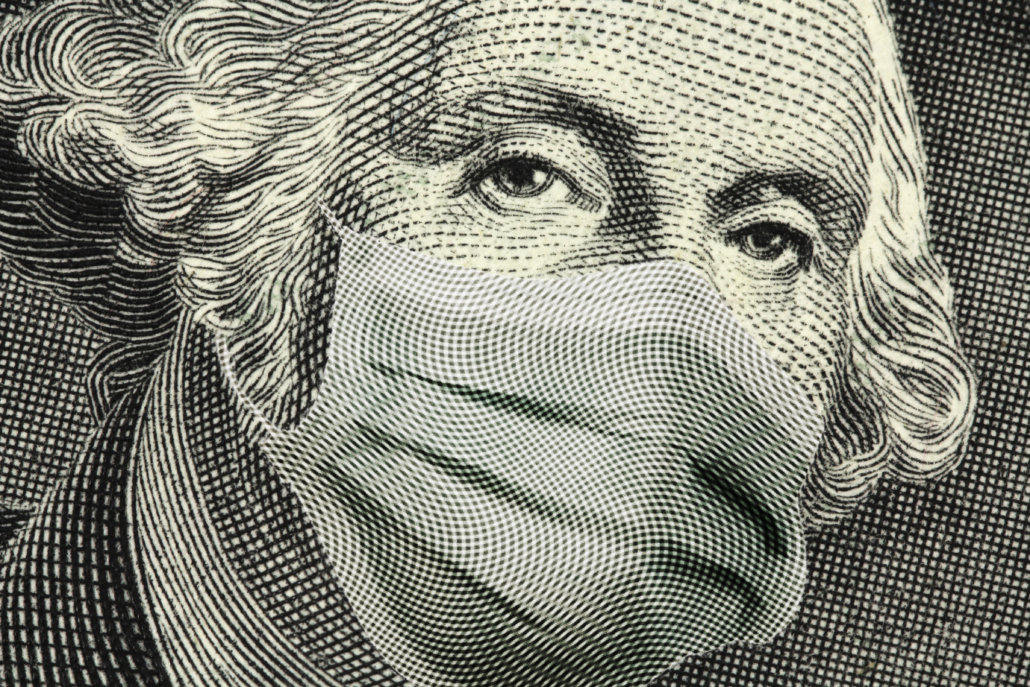#EconomicPolicy
#EconomicPolicy73
#CovidEconomics
Covid Bailouts to Save The Economy
New evidence on the effectiveness of corporate loan programmes
In the early months of the pandemic in 2020, the US Congress and the Federal Reserve took extraordinary action to stave off an economic catastrophe, including four rounds of Congressionally authorised bailouts worth $3.8 trillion and a slew of Fed programmes worth $2.3 trillion.
New research by Vadim Elenev (Johns Hopkins), Stijn Van Nieuwerburgh (Columbia) and Tim Landvoigt (Pennsylvania) finds that interventions that require the Fed to purchase long-term, risky corporate debt are not nearly as effective as the economy needs in a time of crisis like that. Instead, programmes should be aimed at providing loans to businesses headed towards bankruptcy.
Through corporate credit facility programmes like the Primary Market Corporate Credit Facility (PMCCF), Secondary Market Corporate Credit Facility (SMCCF), and Term Asset-Backed Securities Loan Facility (TALF) plan, the Fed planned to buy about $850 billion in corporate debt, or 8.9% of the outstanding stock (3.9% of GDP).
But the study finds that bridge loan programmes like the Small Business Association’s Paycheck Protection Program (PPP) and the Fed’s Main Street Lending Program (MSLP) are more successful at preventing many corporate bankruptcies and prevent the pandemic from spilling over into a financial crisis. When combined, PPP and MSLP make a potent cocktail that prevents 7.3% in cumulative output losses and creates significant social benefits compared with a ‘no Covid policy’ scenario.
More…
The authors analyse the effects of three government policy response options on the economy. The first option – a combination of the corporate credit facility programmes, or CCF – buys risky corporate debt on the primary or secondary debt market, funded by issuing safe government debt.
The second option, similar to the Small Business Association’s PPP, allows banks to make short-term bridge loans to non-financial firms at a very low interest rate of 1% and the loan principal is forgiven when loans are used to pay employees.
The third policy, like the Fed’s Main Street Lending Program, provides bank-originated bridge loans to non-financial firms that aren’t forgivable and carry a modest interest rate of 3% with banks holding ‘skin-in-the-game’ and sharing the risk with the government.
Key findings include:
- PPP saves government money by spending it: With forgivable bridge loans provided to all firms, PPP leads to a substantial dent in non-financial corporate defaults which fall by 2.6 percentage points – a 23% reduction. It also leads to the elimination of two-thirds of all bank bankruptcies. Further, the policy saves about 4% of pre-Covid-19 GDP in bank bailouts that do not occur.
- MSLP is less expensive but not as comprehensive: Giving regular bridge loans to firms with a 3% interest rate and 5% bank risk retention, the MSLP reduces firm defaults even without forgivable loans and eliminates most bank bankruptcies. But the reduction in bank defaults does not meet the potential of using PPP since the banks share losses through the risk retention feature.
- CCF not nearly as effective as PPP or MSLP: CCF programmes lower credit spreads, keeping the cost of borrowing down for firms and preventing a larger drop in investment, but there is a higher increase in government debt since the government must issue Treasury debt to buy the corporate debt, increasing interest rates and partially offsetting the decline in the credit spread. So, while CCF does not cause harm and overall improves welfare, it is not nearly as effective as expected or needed.
Ultimately, the study finds that the combination of bridge loan programmes avoids most corporate bankruptcies and their financial sector and macroeconomic fallout. In contrast, corporate credit facility programmes that buy corporate bonds – requiring the government to purchase long-term, risky debt – are much less effective and more likely to make recovery slower.
Further information:
https://knowledge.wharton.upenn.edu/article/can-coronavirus-bailouts-rescue-u-s-economy/
‘Can the Covid Bailouts Save the Economy?’
Authors:
Vadim Elenev (Johns Hopkins)
Stijn Van Nieuwerburgh (Columbia University)
Tim Landvoigt (University of Pennsylvania)







